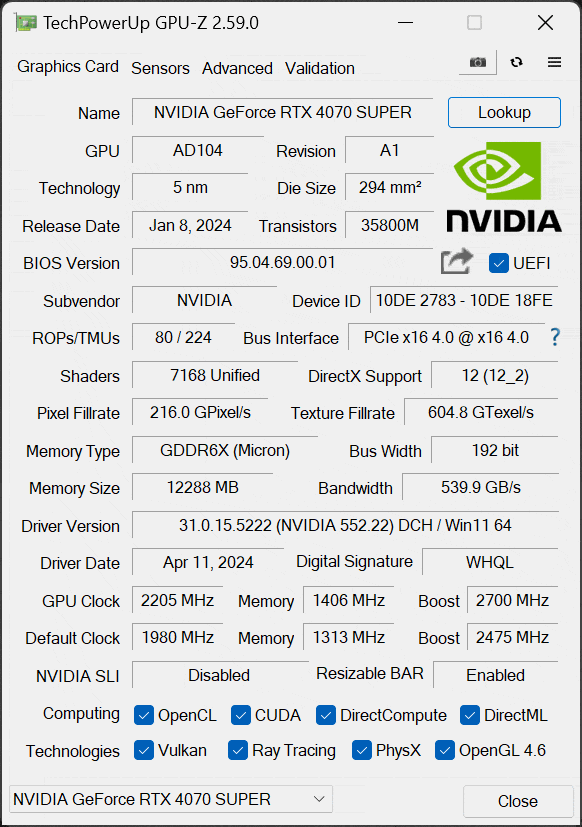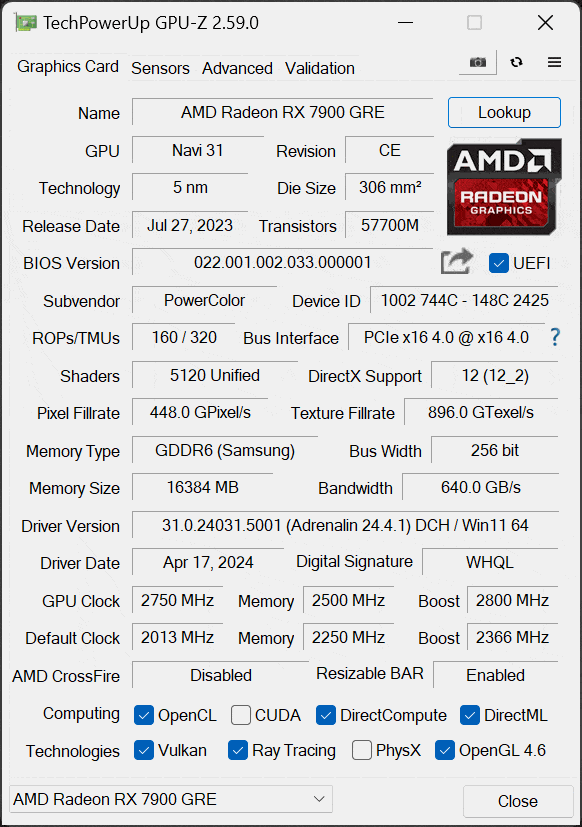
Introduction
In this overclocking performance review, we are going to compare the NVIDIA GeForce RTX 4070 SUPER versus AMD Radeon RX 7900 GRE in gaming performance benchmarks when overclocked to the max to show their maximum performance potential. It will be interesting to find out when both video cards are overclocked, how they compare in gaming performance, and what kind of gameplay experience they can both provide when pushed to the limits at 1440p, with DLSS, FSR, and Ray Tracing.
The NVIDIA GeForce RTX 4070 SUPER was launched on January 16th, 2024 at an MSRP of $599. We have both reviewed the Founders Edition video card at launch, as well as recently overclocked it with new fresh data in May 2024. The GeForce RTX 4070 SUPER upgrades specifications above the GeForce RTX 4070, utilizing the full die specs of AD104 with more SMs and CUDA Cores and 12GB of VRAM.
The AMD Radeon RX 7900 GRE was launched globally on January 27th, 2024 at an MSRP of $549. We have reviewed it at launch, as well as the PowerColor Hellhound Radeon RX 7900 GRE we are going to use in today’s review, and we overclocked both video cards as well in their respective reviews. The Radeon RX 7900 GRE is based on a cut-down version of Navi 31 which the Radeon RX 7900 XT is based on. While it does have 16GB of VRAM, that VRAM runs at a slower clock speed than even the Radeon RX 7800 XT.
In our initial reviews, there was a bug present in the AMD Adrenalin software which capped the maximum memory frequency we could overclock with. Since those initial reviews of the Radeon RX 7900 GRE, new drivers have been released which remedy this issue, and we can now overclock the memory to a much higher frequency. Therefore, in our overclocking review today we will be looking at new Radeon RX 7900 GRE overclocking capability and potential, and performance gains with fresh data, and some new games.
Maximum Overclocks: GeForce RTX 4070 SUPER and Radeon RX 7900 GRE
To overclock the NVIDIA GeForce RTX 4070 SUPER Founders Edition we used the latest version of MSI Afterburner. To overclock the PowerColor Hellhound Radeon RX 7900 GRE we used AMD Radeon Adrenalin Software in the latest 24.4.1 driver which provides higher memory clocks than we initially had at launch.
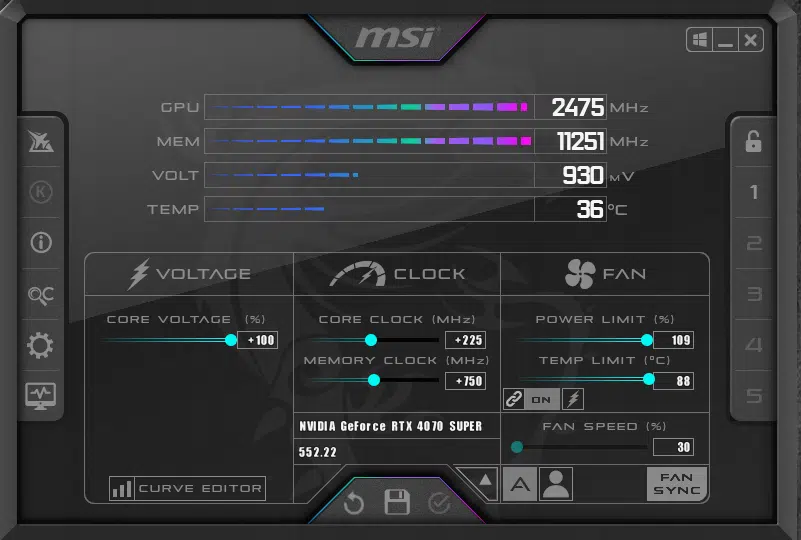
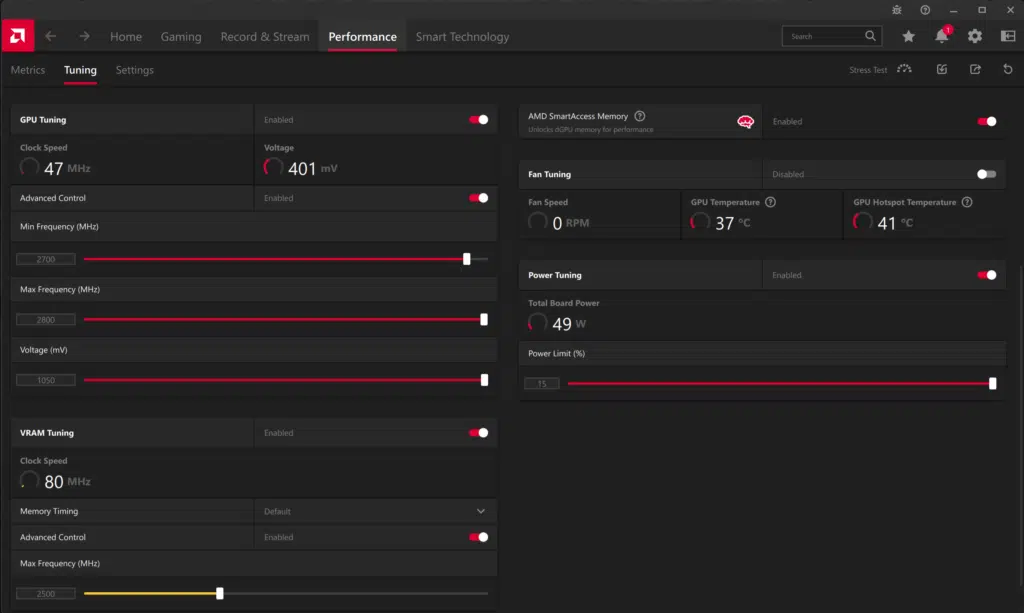
On the left is the screenshot showing the highest overclock we achieved with the GeForce RTX 4070 SUPER Founders Edition. We have the Core Voltage increased to +100 with a Core Clock offset set at +225 and memory at +750 which is 22.5Gbps for the memory or 540GB/s of bandwidth.
On the PowerColor Hellhound Radeon RX 7900 GRE video card screenshot on the right, you can see what it is overclocked at. We have the Power Limit set to +15% with the Min Frequency at 2700MHz and the Max Frequency set at 2800MHz, which does end up being the highest value allowed on the sliders for Max Frequency.
The memory is set at 2500MHz which equals 20Gbps compared to the default frequency of 18Gbps. In our initial launch review, we were only able to overclock memory to 2316MHz which equals 18.5Gbps. Now that we are running at 20Gbps for the memory we are getting an 11% memory overclock, whereas before it was only a 3% memory overclock. The memory bandwidth increases from 576GB/s to 640GB/s now when overclocked, giving a much bigger bump to performance than we originally experienced.
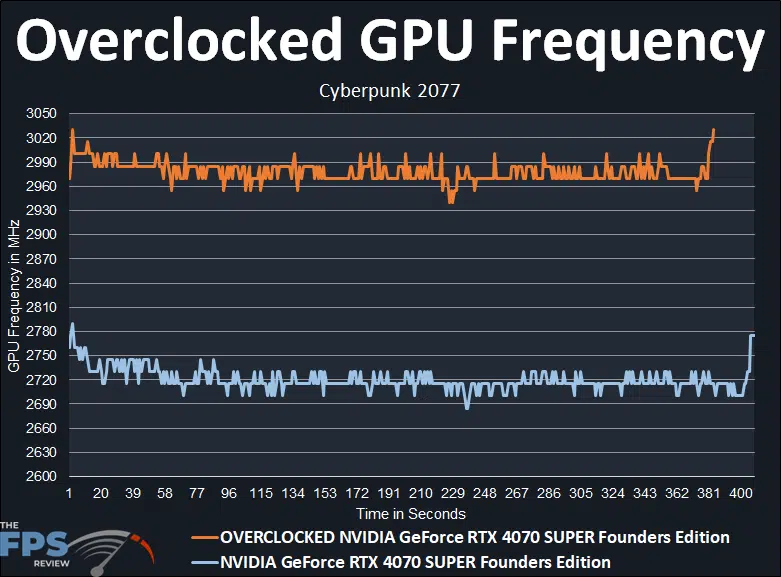
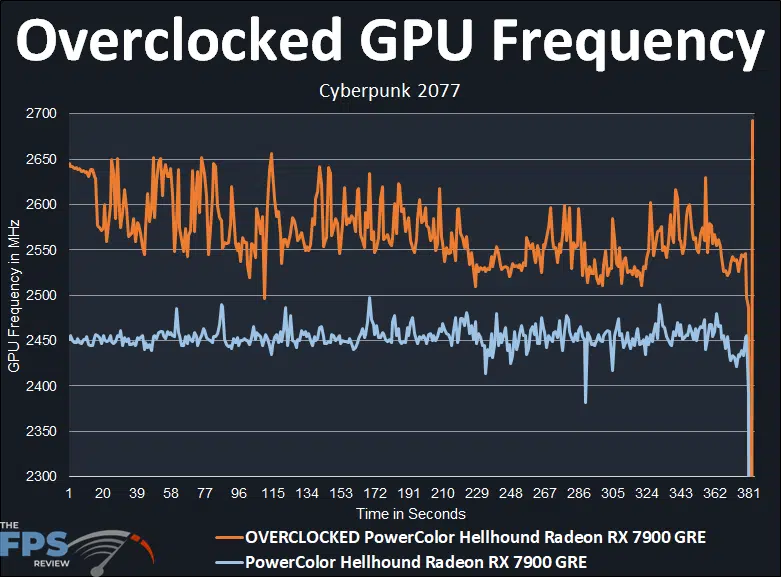
On the left graph, you can see how the default clock speed and overclocked clock speed compares on the NVIDIA GeForce RTX 4070 SUPER OC. The exact average of the default clock speed is: 2719MHz. When overclocked the exact average of the overclocked clock speed is: 2978MHz, a 10% clock speed increase.
On the right graph, you can see how the default clock speed and overclocked clock speed compares on the PowerColor Hellhound Radeon RX 7900 GRE. The exact average of the default clock speed is: 2443MHz. When overclocked the exact average of the overclocked speed is: 2566MHz, a 5% clock speed increase.
You will note that this is slightly lower than our initial overclocking review, and the reason for this is that now with the memory overclocked much higher, it does cut into the total board power, and power limits, and ultimately lowers the GPU clock potential, even though we have the clock speed sliders at the maximum allowed frequency values, there just isn’t any more headroom.
Ultimately, we got better performance out of the PowerColor Hellhound Radeon RX 7900 GRE by leaving the memory at our new highest overclock of 20Gbps and a little less GPU clock speed, compared to a slightly higher clock speed (7% versus 5%), but much lower RAM frequency. The Radeon RX 7900 GRE is bandwidth starved, and overclocking memory really helps performance, a lot more on it, and now that we can max it out, it’s worth it to use this balanced configuration for performance testing when overclocked.
